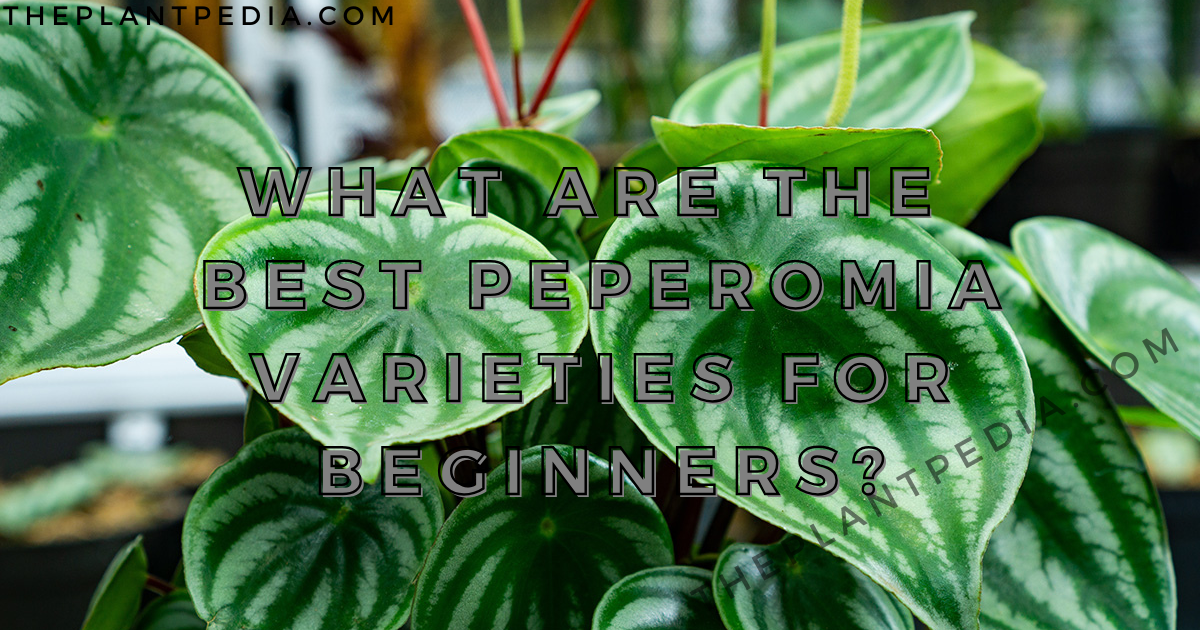Peperomia plants are a fantastic choice for both novice and experienced plant lovers due to their attractive foliage, easy-care nature, and ability to thrive in various indoor environments. Known for their vibrant, textured leaves and compact size, Peperomias make ideal houseplants for those looking to add greenery to their homes without the need for extensive gardening knowledge. If you’re new to growing Peperomia or just want to ensure you’re giving your plant the best care, this guide will cover all the essential tips you need to keep your Peperomia healthy and thriving.
1. Understanding Peperomia: A Quick Overview
What Is Peperomia?
Peperomia is a genus of over 1,000 species of plants that belong to the Piperaceae family. These plants are native to tropical and subtropical regions, particularly in South America, where they thrive in shady, humid environments. The most common types of Peperomia found in homes are Peperomia obtusifolia (the Baby Rubber Plant), Peperomia caperata, and Peperomia rosso, among others. Their unique, often colourful and textured leaves make them a popular choice in the houseplant community.
Why Choose Peperomia?
Peperomia plants are beloved for several reasons:
- Low Maintenance: These plants are relatively easy to care for, making them an ideal choice for beginners.
- Compact Size: Peperomias are typically small to medium-sized, meaning they fit well in various spaces, including windowsills, bookshelves, and desks.
- Variety of Styles: With so many different types, Peperomias offer a wide range of leaf shapes, colours, and textures, adding aesthetic value to your indoor garden.
2. Essential Peperomia Care Tips for Beginners
1. Light Requirements: The Right Amount of Bright, Indirect Light
Peperomias thrive in bright, indirect light. They are not suited to full sunlight, which can scorch their delicate leaves. Here’s what to keep in mind:
- Ideal Light Conditions: Place your Peperomia near a window where it can receive bright, indirect light. East or west-facing windows are often ideal, as they provide bright light without the intensity of direct sun.
- Low Light Tolerance: While Peperomias can tolerate lower light conditions, their growth may slow down. However, avoid putting them in dark corners or spaces where they won’t receive any light at all.
2. Watering: The Art of Proper Hydration
Overwatering is one of the most common mistakes made when caring for Peperomias. These plants prefer to dry out between waterings. Here’s how to water your Peperomia correctly:
- Water When the Soil is Dry: Wait until the top inch or two of the soil is dry before watering again. Stick your finger into the soil to check its moisture level. If it’s still moist, hold off on watering.
- Watering Method: Water your Peperomia thoroughly, ensuring that water reaches the bottom of the pot. However, avoid letting the plant sit in standing water, as this can lead to root rot.
- Reduce Watering in Winter: Peperomias enter a dormant period during the colder months, so they require less water. Watering once every two weeks should be sufficient in the winter.
3. Humidity: How Much Moisture Does Your Peperomia Need?

Peperomias are native to humid environments, so maintaining a certain level of humidity can help them thrive. While they are not as demanding as other tropical plants, here are some ways to provide the right amount of humidity:
- Humidity Range: Peperomias prefer humidity levels between 50% and 60%. If your home is dry, especially in winter, consider using a humidifier to keep the air moist around your plant.
- Avoid Mist: Unlike some tropical plants, Peperomias don’t require regular misting. Misting can lead to fungal infections and other issues, especially if the humidity is already high.
4. Temperature: Keep It Comfortable
Peperomias are generally adaptable to average room temperatures but do best in environments between 18°C and 24°C (65°F to 75°F). Here’s what you need to know:
- Avoid Extreme Temperatures: Keep your Peperomia away from drafts, air conditioners, or direct heat sources like radiators and fireplaces. Sudden temperature changes or cold drafts can stress the plant and hinder its growth.
- Ideal Placement: A temperature-controlled room with moderate warmth and consistent temperature is perfect for your Peperomia.
3. Soil and Potting: Choosing the Right Growing Medium
1. Well-Draining Soil
Peperomias prefer a light, well-draining potting mix. This is crucial to prevent water from accumulating at the roots, which could lead to root rot. The ideal soil should retain some moisture but not stay soggy for too long.
- Recommended Mixes: A good potting mix for Peperomias can be a blend of peat, perlite, and pine bark. If you want to make your own mix, combine two parts peat moss, one part perlite, and one part orchid bark to create a light, fast-draining soil mix.
2. Pot Selection: Drainage is Key
Ensure that your Peperomia is planted in a pot with drainage holes. Without proper drainage, water can accumulate at the bottom of the pot, causing the roots to rot.
- Choose the Right Pot Size: Select a pot that is slightly larger than the root ball of your Peperomia. Avoid pots that are too large, as this can lead to water retention issues and root rot.
4. Fertilising: How to Feed Your Peperomia
Peperomias are not heavy feeders, but they still benefit from occasional fertilisation. Here’s how to feed your plant:
- Use a Balanced Fertiliser: During the growing season (spring and summer), you can feed your Peperomia once a month with a balanced, water-soluble fertiliser. Look for a fertiliser with equal parts nitrogen, phosphorus, and potassium (e.g., 20-20-20).
- Dilute the Fertiliser: Always dilute the fertiliser to half strength to avoid over-fertilising, which can burn the roots and harm the plant.
- No Fertilisation in Winter: During the colder months, when the plant is in a resting phase, refrain from fertilising, as it won’t be actively growing.
5. Pruning: Keep Your Peperomia in Shape
While Peperomias don’t require heavy pruning, occasional maintenance will keep your plant looking its best. Here’s how to prune your Peperomia effectively:
- Remove Dead or Yellowing Leaves: Prune any yellow or damaged leaves to keep the plant looking healthy. This also helps redirect the plant’s energy to healthy growth.
- Pinch Back for Bushier Growth: If you want your Peperomia to grow more compact and bushy, pinch back the stems to encourage new growth. This is particularly effective for trailing varieties.
Also Read: What Are The Best Peperomia Indoor Decor Ideas For Small Spaces?
Conclusion
Caring for a Peperomia plant is relatively simple, even for beginners. With the right balance of light, water, humidity, and temperature, your Peperomia will thrive and continue to be a stunning addition to your home. By understanding the essential care needs of these plants—such as watering properly, providing adequate light, and maintaining humidity levels—you can ensure that your Peperomia grows healthy and vibrant. Don’t forget to use well-draining soil, select the right pot with drainage, and feed your plant during the growing season. With just a little attention and care, your Peperomia will flourish for years to come.

